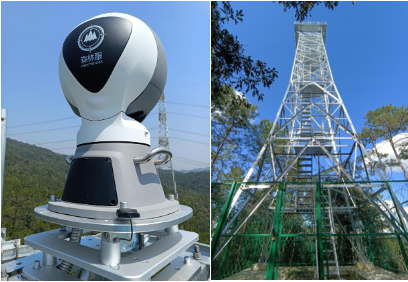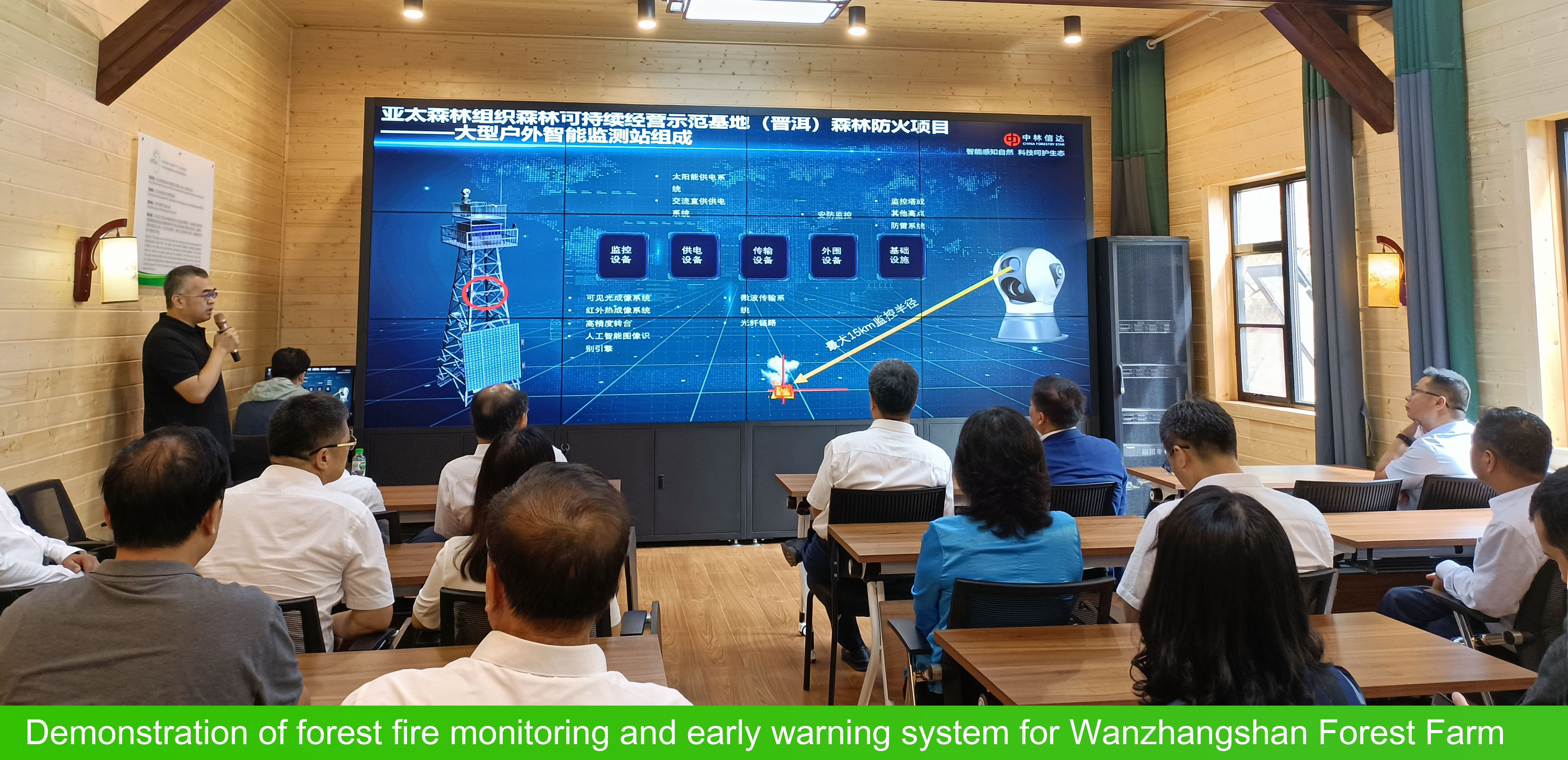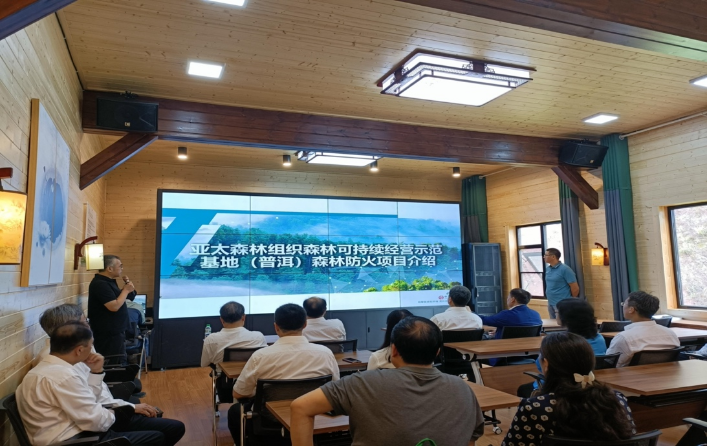Project title: Fire Prevention Project at the APFNet Pu’er Training Base [2020P5-PE]
Supervisory agency: Forestry and Grassland Bureau of Pu’er City
Executing agency: Wanzhangshan Forest Farm
Budget in USD (total / APFNet grant): 635,912 /591,059
Duration: 12 months 09/2020-08/2022
Target economy: China
Site Location: Wanzhangshan Forest Farm, Pu’er City, Yunnan Province
Project goal: The project aims to install a forest fire monitoring and early warning system for Wanzhangshan Forest Farm. The system uses front-end intelligent monitoring equipment installed in the forest area and back-end command and control platforms in the control center to monitor and quickly assess any fire outbreaks in the forest area in real time. The system allows the officer at the control center manage fire-fighting actions at every level, from calling fire-fighting forces, to determining the optimal route to the outbreak, to providing technical support for forest fire prevention management and overall reducing the incidence of fires and fire losses.
Introduction
Over the past few years, more frequent and catastrophic forest fires have occurred around the world. Forest fires tore across the Brazilian Amazon, imperiling the world’s most biodiverse forests, and even the frozen lands of Siberia and Alaska have suffered unprecedented wildfires. While small-scale fires are a natural process to help the forests clear-off the underground shrubs and allow the forest to regenerate, large-scale, hot fires can cause considerable destruction to both forest ecosystems and human communities and thus need to be prevented.
China is also experiencing climatic shifts that are putting its forests at an increased risk for fire. In China, the greatest risk for forest fires is in the winter season (January to April) due to monsoonal influences that cause the lowest precipitaiton of the year to be in winter, and thus the fire threat remains serious each year. Based on forest fire records provided by the Forest Fire Management Office of the National Forestry and Grassland Administration in China, the annual average number of fires in China between 2000 and 2020 was 6,283 and average burned area was 183,126 ha. It is also estimated that human-caused fires accounted for more than 95% of all forest fires. Therefore, the early detection of active forest fires is crucial in protecting forest resources and human communities whose livelihoods depend on the forests. Fortunately, with the digitalization of spatial information and new remote sensing technologies the detection and monitoring of forest fires has become more efficient. Human patrolling for forest fires have been partially replaced by high-tech forest fire auto-detection system.
Protect the forests with Forest Fire Monitoring and Early Alarming System
Since 2014, APFNet has supported several economies (including Laos, Cambodia, and China) to install the “Forest Fire Monitoring and Early Alarming System (FFMEA)” through its demonstration projects, aiming to monitor forest fires, detect fires early and prevent them from escalating and thus protect the forest resources. The FFMEA system is a state-of-the-art solution for monitoring forest fires, which uses an infrared-sensitive camera installed on a tower in the forest area (called the "Forest Watcher") and back-end command and control platforms in the control center to automatically monitor fire outbreaks. The forest fire monitoring tower can be left unattended, monitoring in real-time throughout the day. The forest watcher can cover a radius of 15km within 30 minutes and has a target positioning accuracy of within 100 meters.

Forest fire monitoring towers (R) and forest watcher(L) in Pu’er (Photo by Li Zhaochen, APFNet)
Pu’er is located in the transition zone between north tropical and south sub-tropical climate. Although the annual rainfall reaches around 1,450 mm, 70% of the rainfall occurs during the rainy season (June – September), which leaves the dry season with a relatively high risk for forest fires. Thus, between 2020 and 2021, APFNet installed the FFMEA system in Wanzhangshan Forest Farm, where the APFNet Pu’er Sustainable Forest Management Demonstration and Training Base located. Four forest fire monitoring towers (one tower on Ban’me mountain has a viewing platform accessible to the public) and two control centers were built at the forest farm, with one control center established at the headquarter of the farm and the other at the APFNet Pu’er Base. The system allows the monitoring of 50-60% of its total forest area that is 19,120 ha.
Locations of the fire monitoring towers and the fire control center in Pu’er (Photo by Li Zhaochen)
The forest fire monitoring control center in Pu’er (Photo by Li Xianze, Wanzhangshan Forest Farm)
Since the system monitors forest fire automatically in real-time, it replaced the traditional manual fire monitoring with auto-detection. When the forest fire is detected, the location of the fire will be rapidly located using GIS, and the system will automatically inform the responsible person at the control center, displaying a map with its exact location. Optimized routes to reach the firing area will be suggested, and the system is also able to analyze and forecast possible trends of the fire, such as in which direction it will burn, which supports the decision making on fire fighting.
It is expected that the new system will rapidly reduce the time between initiation of the fire and its elimination, thus comprehensively protecting forest resources in Wanzhangshan Forest Farm.



